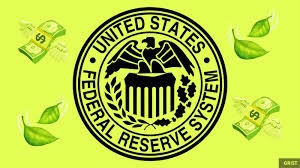Although Fed Chair Jerome Powell agrees that climate change poses risks for the financial system, he is not willing to take bold steps to combat climate change. In a recent press conference, he said that “climate change is not something [the Fed] considers setting in monetary policy”. However, due to significant physical, transitional, and liability risks to the economy, climate change will directly impact monetary policy by slowing productivity and economic growth, leading to high inflation. These issues, already part of the Fed’s mandate, would justify a change in their stance towards climate change.
Unlike other central banks, the Fed only has the ability to purchase corporate bonds through its emergency lending program. The recent economic recession was an unprecedented shock, leading the Fed to begin to purchase investment-grade corporate bonds to stimulate the economy. However, the Fed’s corporate bond purchases during the pandemic have been overly present in carbon-intensive industries, unintentionally directing the economy towards a brown recovery. As a first step to begin to address climate change through monetary policy, the Fed should gain authorization to buy and sell corporate bonds regularly through their OMOs, along with government securities. These purchases should include both green bonds (GBs), which directly fund climate-related projects, and sustainability-linked bonds (SLBs), where issuers pledge to improve their performance against environmental targets, but have no restrictions on how revenues are spent. A combination of these climate bond purchases would be both positive for the environment and allow more issuers to obtain sustainable financing, thus maintaining market neutrality.
When conducting expansionary policies such as quantitative easing, the Fed should favor climate bonds over brown bonds, expediting the transition towards a carbon-neutral portfolio. When conducting tapering and contractionary policies, they should sell brown bonds first, opting to keep GBs and SLBs on their balance sheet for longer, thereby boosting the green economy. An increase in the purchase of climate bonds is also positive for bond-issuers as it improves access to liquidity sources and motivates them to issue more. These climate bonds can also be utilized as collateral for repurchase agreements, which will provide an incentive to banks to hold more climate bonds in their portfolios. Additionally, when the Fed implements measures such as the main street lending program, they should also include green small-medium businesses. Lastly, there should be continued forward guidance regarding these policies, broadcasting a continuation of these measures until a specific date or climate goal is achieved.
As a result of the Fed’s actions to combat climate change, governments, municipalities, and corporations will issue more climate bonds, which will result in the creation of more green initiatives. Through the implementation of these policies and the introduction of climate bonds into the Fed’s portfolio, the United States will be following in the footsteps of many climate-oriented central banks, like the ECB. These changes will introduce a new era of monetary policy – one where climate change is a priority.

Comments are closed